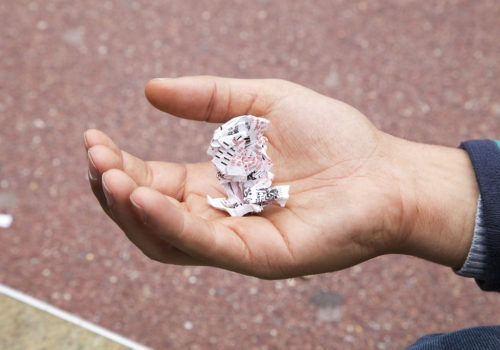The call for submissions to the 2015 edition of the Carte Blanche PMU photography prize runs through March 3rd, 2015. The Carte Blanche, which supports the work of young photographers, has been co-organized with Le BAL in Paris since 2010. This year the PMU will join forces with the Centre Pompidou, the city’s premier museum of contemporary art. The PMU (Paris Mutuel Urbain) is a national chain of betting offices and cafés. We spoke with Benoît Cornu, PMU’s Director of Communications.
L’Oeil de la Photographie: In just a few years, La Carte Blanche PMU has become an important part of the photography world. What is your assessment of the five first editions of the prize?
Benoît Cornu: The goal of the Carte Blanche PMU was to change the way people see the PMU, to leave stereotypes behind and share the vision of different artists of the brand and its world. We’ve reached that goal by showing many things that people no longer necessarily saw at PMU. For example, Mohamed Bourouissa restored a value to an object that was, for us, somewhat unsettling: crumpled betting tickets discarded on the floor. It’s rewarding to have everyday life at the PMU transformed into a work of art.
As a patron of the arts, it’s always interesting to see how artists evolve over time. The Carte Blanche has served as a springboard for young artists: Malik Nejmi did a residency at the Villa Medici in Rome, Mohamed Bourouissa is becoming one of France’s greatest contemporary visual artists, and Kourtney Roy’s stature as a photographer changed in many ways after being selected for the Carte Blanche. The PMU plays a role supporting the work of young photographers and we do so with great pride. Today the Carte Blanche PMU is well known, and the PMU has become a patron whose involvement in the world of photography has been recognized.
Over the years, you have seen projects with diverse views of the PMU, some of them highly artistic, which are free from the clichés one associates with the PMU. How have you approached these new visions with each edition?
For every Carte Blanche, we start from zero. We ask the artists to give us their personal vision of our world. That’s the only requirement. It’s always a great surprise to discover the diversity of the projects and different ways of seeing the PMU. The fact that the jury can interact with the finalists allows the jury to gain a deeper appreciation of aspects of the project that were perhaps not obvious on paper. The debates among the jury members are insightful, and having all the big names of photography discussing the vision of the PMU is highly rewarding and thrilling to watch.
In 2015, La Carte PMU will leave Le BAL for the new photo galleries of the Centre Pompidou. This will give a new audience the chance to discover La Carte Blanche. Do you think that will have an impact on the submissions? And on your selection?
La Carte Blanche PMU grew so quickly, thanks to Le BAL and its director, Diane Dufour, with whom we have long worked closely. Our move to the Centre Pompidou, in our fifth year of existence, is a sign of recognition, both for us and for the winning photographer, whose work will be exhibited for the first time in the photography galleries of the Centre Georges Pompidou. For a contemporary photographer, being exhibited at the Centre Pompidou is a major achievement. The move will allow us to enlarge our audience and to fulfill our role as a patron of the arts, a role which also involves introducing contemporary photography to an audience that might not have had access to it beforehand.
















